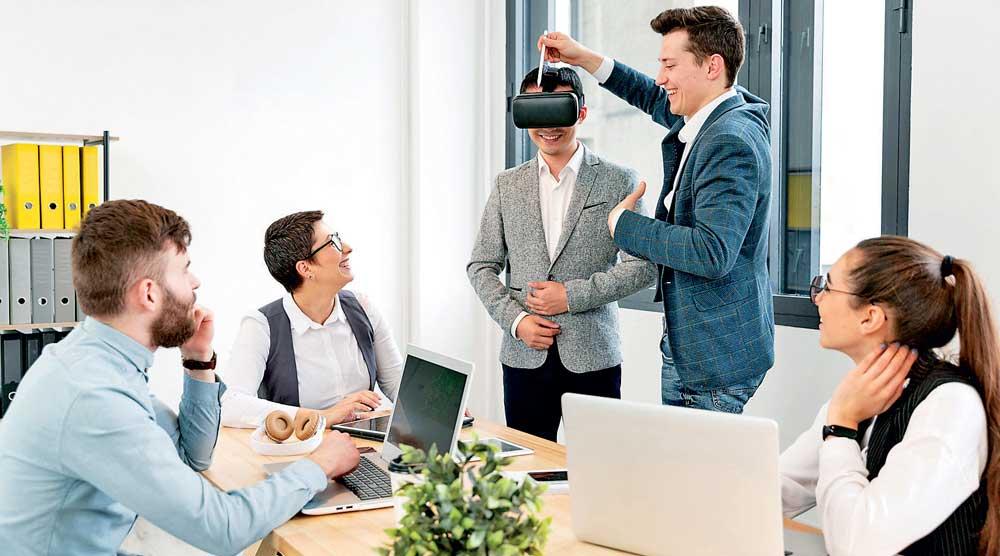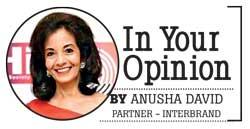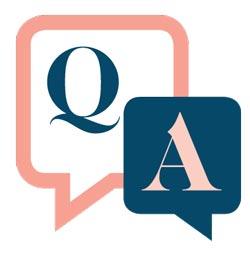Reply To:
Name - Reply Comment

 Today IN YOUR OPINION we focus on the extremely relevant topic of ‘ THE CHANGING FACE OF THE MODERN WORK ENVIRONMENT ’, where a diverse range of Corporates are interviewed by Anusha David.
Today IN YOUR OPINION we focus on the extremely relevant topic of ‘ THE CHANGING FACE OF THE MODERN WORK ENVIRONMENT ’, where a diverse range of Corporates are interviewed by Anusha David.
A lot has changed in the world of work since the Pandemic.
In today’s rapidly evolving world, the professional landscape of work environments have become a focal point of discussion. There seems to be a shift in how the newer generations perceive and engage with work that may be catalyzed by technological advancements, a shift in societal values, and a change in perspective of what is important in one’s life. The traditional nine-to-five work model is becoming increasingly undesirable in the eyes of the newer generations, who prioritize flexibility and work-life balance. Remote work, flexible hours, and autonomy in managing one’s schedule have become essential considerations for newer generations when evaluating potential employers. Companies that allow employees to work from anywhere in the world have become more appealing and are likely to attract more youth employees as compared to those with rigid traditional structures. However, with this flexibility comes the challenge of maintaining boundaries  between work and personal life. The widespread use of technology blurs these boundaries, making it increasingly difficult to disconnect. As digital natives, newer generations are constantly connected and may be expected to be responsive at all hours. This constant connectivity can lead to burnout and decreased productivity if not managed effectively. The newer generation values autonomy and entrepreneurial opportunities thus often opting for freelance or contract work over traditional employment. This shift may reflect their desire for independence and the ability to pursue diverse interests and passions. This is unlike older generations for whom job stability and financial security often took precedence. The younger generations seek environments where their voices are heard, perspectives are valued, and their differences are celebrated; however employer’s expectations vis a vis job completion, dedication, passion and excellence remain unchanged.
between work and personal life. The widespread use of technology blurs these boundaries, making it increasingly difficult to disconnect. As digital natives, newer generations are constantly connected and may be expected to be responsive at all hours. This constant connectivity can lead to burnout and decreased productivity if not managed effectively. The newer generation values autonomy and entrepreneurial opportunities thus often opting for freelance or contract work over traditional employment. This shift may reflect their desire for independence and the ability to pursue diverse interests and passions. This is unlike older generations for whom job stability and financial security often took precedence. The younger generations seek environments where their voices are heard, perspectives are valued, and their differences are celebrated; however employer’s expectations vis a vis job completion, dedication, passion and excellence remain unchanged.
|
Q:Keeping in mind the working patterns seemingly desired by the younger generation, is office work and the concept of an office a thing of the past?
A:Millenials who are entering the work force today are definitely looking at more flexible work patterns than those available in the past. With the advent of COVID, it became apparent that technology has now enabled work to be performed from anywhere, be it the office or home. However, many organizations across the world have now pulled back from the ‘Work from Home’ (WFH) concept as they have realized that only some back-office operations lend themselves effectively to WFH. They have further realized that effectiveness, efficiency, customer servicing, organizational culture, team building etc. all become fragmented when employees are not physically present. Many employees too enjoy the camaraderie of connecting face to face with their peers and admit that working together is far more exciting than working alone. However, what they crave is the flexibility to handle their personal affairs while being a high contributor at work. If organizations of the future are to be successful, it will be imperative that they strike a balance between the desires of an emerging work force and the achievement of organizational goals and objectives. Flexible work patterns will need to be offered, curated to the individual needs of the employee rather than a one size fits all. |
|
Q:How do you as an employer in your particular industry, navigate the modern workplace and it’s workforce?
A: As a social enterprise employer, navigating the modern workplace feels like a journey of balance and growth. I’ve discovered that embracing flexibility and remote work not only boosts productivity but also keeps our team happy, especially with self-motivated and dedicated team members. Adapting to industry changes allows us to innovate and learn something new every day. By emphasizing open communication, clear goals, and fostering a supportive environment, we are evolving to meet the ever-changing demands of our industry while maintaining smooth operations. |
|
A:In my opinion, this shift, though somewhat exaggerated, reflects an underlying truth and is not necessarily negative for the workplace. As industries streamline their structures, tasks—particularly in lower and middle hierarchies—have become more standardized. While this might make employees feel more replaceable and less impactful, it also promotes greater job mobility, offering both employees and companies a flexibility that was less common in the past. However, work isn’t solely about productivity and job roles; company culture and social dynamics remain crucial to job satisfaction. These factors can strongly encourage employees to stay with a company, fostering a “job for life” mentality even as roles become more standardized. In the past, innovation was centered on knowledge creation in fields like engineering. Today, with the rapid exchange of information and heightened competition, innovation has shifted toward less tangible areas such as branding, business strategy, and technology. Mastery in these areas can closely tie an employee’s success to that of the company, reviving the sense of impact and the “job for life” sentiment that once existed with more tangible skills. |
|
Q:How has the ever changing face of the modern working environment affected the hospitality industry in Sri Lanka?
A: Employees now prioritize flexibility and work-life balance, prompting employers to offer adaptable schedules and wellness programmes, enhancing satisfaction and retention. Technology plays a key role in this shift. AI is revolutionizing hotel operations by automating routine tasks and customer support, allowing staff to focus on personalized guest experiences. AI data analytics tools provide insights into customer preferences, enabling targeted marketing campaigns and personalized offers, boosting engagement and revenue. AI also supports dynamic pricing strategies and optimizing room rates based on real-time demand. Fostering inclusive workplaces is crucial. The industry is also focusing on continuous learning. Challenges remain, including maintaining work-life balance. retaining motivated talent, and overcoming the barriers to AI adoption due to cost and resource constraints. Embracing these developments can help the hospitality industry in Sri Lanka thrive, driving sustained growth and excellence. |
|
A: The 2022 construction crisis provided Tudawe Brothers (Pvt) Ltd with a unique opportunity to deep dive into our work force management. The industry experienced a large brain drain and companies found themselves losing the top and second layer leadership to skilled migration. This created a necessity for the company to reorient. An opportunity was created for talented employees in the range of mid 30s to 40s to take leadership positions. Necessity created a large mind set shift. A female lawyer become the CEO, an MBA/CIMA graduate became the Head of Construction Monitoring, an accountant became the Manager of Operations of an SBU and for the first time, a female became the Head of our Tender division. The company showed initiative in recognizing leadership in an industry resistant to management from non-engineers, impervious to gender inclusivity, and often subject to ageism. The change brought about fresh thinking and collaboration amongst a multi-disciplinary team uniting for a common goal; to manage a legacy company in crisis. There is much more work to be done with our inclusivity and diversity, but this wakeup call is a good start for us. |
|
A: We strongly believe that young blood needs to be infused into our workforce from time to time, starting from production floor level employees to senior management level employees, regardless of the job type. We believe in hybrid work cultures where young and old, seniors and beginners work together to identify the talent that will lead our organization in the future. At DSI, we refer to them as ‘Future Leaders’. Each company’s executive committee must identify their next generation leaders to ensure a smooth transition of duties. However, with the introduction of Performance Management Systems (PMS) across all sectors of our group, KPIs are linked to the company’s strategic direction and goals. This ensures the productivity of all staff level positions, being captured and measured through the Human Resource Division. Continuous learning and development is something we allocate a significant amount of time to at DSI. Our goal is to promote Agile Management Practices and foster a positive organizational culture. This allows the respective board members to concentrate on the strategic direction of the business. |
|
A:The perfect modern office blends thoughtful design with a welcoming ambience to foster collaboration, creativity, and well-being in a post-pandemic world. Key elements include adaptable open spaces for interaction, quiet zones for focused work, and modular furniture for flexibility. An open floor plan promotes spontaneous communication and transparency, while a mix of private and communal areas support diverse work styles. Moveable furniture and home-like elements, such as comfortable lounges and personalized touches, enhance adaptability and a sense of belonging. Incorporating natural light, greenery, and ergonomic design boosts physical and mental health. The importance of biophilic design cannot be overstated; integrating natural elements like plants and natural materials, and creates a soothing environment that enhances well-being and productivity. Integrated technology, like smart boards and video conferencing, ensures seamless hybrid working, allowing staff to transition easily between remote and in-office tasks. Amenities like wellness centres, lounges, and outdoor spaces emphasize work-life balance, making the office a place employees choose to spend time in. |
|
A:As I am essentially working in the development sector, going by my own experience, not just post-Covid but also as the Manager of a regional project involving multiple countries and with a team located in various Asian countries, the remote work model significantly lends itself to our needs. While it was the Covid situation that led to the initial change iAn the way we work, the organization I work for is one of many that has continued to adapt to remote work as it suits the requirements of regional programme management. I do however strongly believe there are pros and cons to the remote work model. The lack of face-to-face interaction among team members has an impact on productivity, as do home-life distractions, that tend to disproportionately dominate the way we used to balance our personal obligations. At the same time, the remote model provides the flexibility required by many to better juggle work and home demands – although this may not always be in the best interests of greater productivity and timeliness. |
|
A:HR must become an integral part of the business strategy of the company. We must understand the domain/s we function in, emerging consumer and market trends, tech transformation taking place, global shifts that are predicted, and competitor strategies etc. to create value to the organization.
|
|
A:As the Chairman of COYLE, a chamber that represents Sri Lankan entrepreneurs, I am proud to highlight the unique features that define Sri Lankan entrepreneurs in these dynamic times. Exemplary Crisis Leadership: Sri Lankan entrepreneurs have demonstrated exceptional crisis leadership. In the face of economic and political challenges, they have shown resilience and innovation, turning obstacles into opportunities. Strategic Collaborations and Partnerships: We have witnessed a surge in strategic collaborations. For instance, during lockdowns, local ride-hailing services partnered with state wholesalers to deliver essential goods. Such partnerships underscore the collaborative ethos of our entrepreneurs, driving mutual growth and community support. Sectoral Innovation: Key sectors like healthcare, ICT, e-commerce, and agriculture have emerged as hotspots for innovation. Resilience and Adaptability: Sri Lankan entrepreneurs have embraced new technologies, explored diverse markets, and remained agile in their strategies. In conclusion, the changing face of the modern work environment presents both challenges and opportunities. |
|
A: As a large diversified conglomerate, navigating the complexities of flexible working requires a balance of employee well-being and operational effectiveness. It’s about offering options, while ensuring business continuity. Firstly, we should assess each flexible working arrangement’s impact on productivity, collaboration, and company culture. Pilot programmes can help gauge feasibility before full-scale implementation. Clear guidelines and communication are essential. Establish transparent policies on eligibility, expectations, and performance measurement. This ensures fairness and minimizes misunderstandings. Technology plays a vital role. Invest in tools that support seamless remote work and communication, enabling employees to stay connected and productive. And then recognize that one size doesn’t fit all. Different roles and departments may require different levels of flexibility. Regularly solicit employee feedback to refine policies and make adjustments as needed. Ultimately, we have found out that the best flexible working arrangements for DIMO, are those that empower employees while maintaining a productive and engaged workforce. |
|
A:Balancing the demands of running a digital marketing agency while maintaining a healthy family life is undoubtedly challenging, especially in today’s fast-paced work environment. At Zélus Consult, we prioritize work-life balance by fostering a culture that values both professional growth and personal well-being. From the outset, we implemented smart work schedules and remote working options for the team. This flexibility allows everyone to attend to personal commitments without compromising on the quality of their work. We also focus on clear communication and realistic goal-setting, ensuring that expectations are manageable and aligned with our team’s capacity. As founders, we lead by example, setting boundaries to avoid burnout and encouraging our team to do the same. We emphasize the importance of taking breaks and disconnecting from work after hours. Regular check-ins help us stay attuned to each other’s needs and address any challenges before they escalate. In essence, by going against the industry norm of relentless work hours and instead fostering a balanced approach, we’ve created an environment where both business success and personal fulfillment can thrive. This balance is not just achievable but essential for long-term sustainability. |
|
A: Employers today must navigate the fine balance between flexibility and productivity. Tim Cook, CEO of Apple, describes Apple’s remote work policy as “the mother of all experiments,” acknowledging the benefits and challenges of both remote and in-office work. As a modern organization, it is important to find a hybrid model that leverages the strengths of both setups, allowing for the serendipity, learning on the job, and collaboration of in-person interactions while also accommodating the flexibility and autonomy of remote work. Here are a few strategies to achieve this: Set Clear Expectations: Flexibility does not mean a lack of structure. Employers should establish clear guidelines around working hours, availability, and deadlines. This clarity helps employees manage their time effectively without the constant pressure of being “always on.” Adopt Collaborative Tools: Utilizing platforms like Slack, Microsoft Teams, and project management tools can ensure continuous communication and collaboration, even when teams are dispersed globally. These tools help in maintaining the flow of information and keeping everyone aligned with project goals. Focus on Outcomes, Not Hours: Employers should focus on the quality and timeliness of the work produced rather than the number of hours spent working. This shift can enhance employee satisfaction and productivity. Promote Work-Life Balance: Encourage employees to set boundaries between work and other activities. Not everyone has the self-discipline to be an effective hybrid worker. Flexibility taken too far can create deeper productivity issues, while always-on work can create burnout. Secure remote work effectively: Remote work presents significant cybersecurity challenges by way of the increased attack surface including data leaks, phishing attacks, unsecured personal devices, and network exposure. Employers must implement strong security measures. |